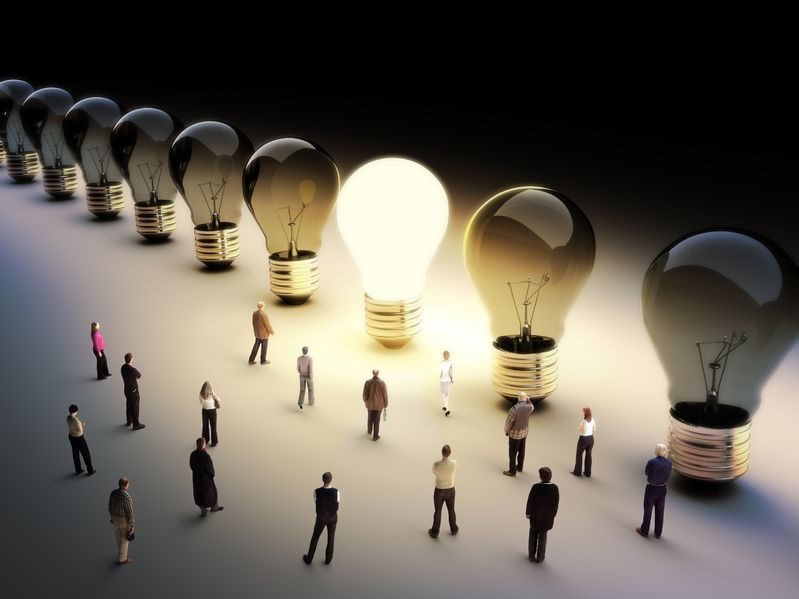There is no denying that we live in a strange reality. Fresh off the uncertainty brought on by the pandemic and its ramifications, we are once again left in the dark - literally and figuratively - by the ongoing and clearly interminable power cuts. We are searching for answers from government leaders tasked with providing them but who are not forthcoming in supplying solutions that will sustain our country's future.
The fact of the matter is that there are no one-size-fits-all solutions. As I see it, our only hope is for leaders from all industries to step up to drive the relevant conversations to navigate their unique pressure points in the best interest of all their stakeholders.
As part of his cabinet reshuffle, the President appointed Kgosientso Ramakgopa as the new Minister of Energy. It is his (unenviable) task of implementing the existing Energy Action Plan, which includes fixing Eskom and improving the existing electricity supply; enabling and accelerating private investment in generating capacity; accelerating procurement of new capacity from renewables; unleashing businesses and households to rollout investment in rooftop solar; and fundamentally transforming the electricity sector.
Workforce impact
Within that ambitious list of deliverables, there are two key issues that jump out: the procurement of new capacity from renewables and the transformation of the electricity sector. The conundrum is that, although this may ultimately bring about the end of our electricity woes, it will have massive repercussions on the workforce.
We are not only reliant on coal for generating electricity (while being the 14th highest carbon-emitting country in the world and the highest in Africa), but also for providing many much-needed jobs. South Africa is already struggling with high levels of socio-economic inequality, and our (official) unemployment rate sits at 34% (unofficially closer to 40% if you factor in those who have stopped applying for work), with youth unemployment at over 50%. Considering that the mining industry employs over 450,000 people (directly and indirectly), mining executives are at the nexus of an almost insurmountable challenge.
In November last year, at the 27th United Nations Climate Change Conference, President Ramaphosa introduced South Africa’s Just Energy Transition Investment Plan. This is our pledge to the international community to act responsibly and decisively to move away from this same coal that we depend on, to achieve a net-zero economy by 2050. In fact, the mandate is to not build any new power stations after 2030 and have four-fifths’ capacity closed by 2050.
A study by RES4Africa Foundation found that potential jobs in the wind and solar PV sectors – which according to government’s Integrated Resource Plan will contribute 50% and 20% respectively to the alternative electricity-generation sources – outnumbered the losses in coal mining. However, most of the jobs are in the construction phase and not in operation and maintenance. Furthermore, components for renewable energy sources are produced oversees.
Mining society
Fundamentally, the deeper, societal element is also at play here. You cannot disregard how deep mining is engrained in the fibre of many societies in South Africa. In towns in provinces such as KwaZulu-Natal, Limpopo and Mpumalanga, it’s all around. It fills the air, it runs in the water, it puts food on the table. The decommissioning of mines will not only potentially rob residents of their livelihoods, it will rob them of their identities.
To minimise job losses and ensure sustainable employment, mass training and upskilling programmes will have to be established and stakeholder engagement will take on a new, even more complex dimension. The leaders of the mining companies I work with are deeply aware of the uphill battle they face. And mining is not the only industry suffering job losses due the energy crises.
Vincent Obisie-Orlu 26 Jan 2023
So, what is the role of leaders in fulfilling their mandate as custodians of their business, their people, and the societies and environments that they impact? As one of my clients, the chief executive of a large mining company, always said to me, “I am not just responsible for my 40,000 employees; my decisions directly impact the 400,000 people that are dependent on those employees’ livelihoods”. Given industry leaders’ obligation to serve their stakeholders, what can they do differently to engage with all stakeholders, strive for openness and trust, and play their part in a just energy transition?
Collaborative development
I believe the answer lies in realising that we cannot do it alone. Across industries, the need for innovation, stakeholder engagement and greener ways of doing business is increasing exponentially. Our mandate is not to come up with all the solutions but to engage the workforce and other stakeholders to work together to find them. We have a role to play in developing empowered teams, and encouraging transparency, collaboration and inclusivity – thereby ensuring agile teams are willing and able to take on new (and often unexpected) challenges. Therefore, leaders who understand how to influence a social interaction, whether it be with a stonewalling government official, an adversarial shop steward, a fearful community leader or a hostile environmental activist, will have an edge.
Taking a human approach to stakeholder engagement is outside the comfort zone of many leaders, and yet forms a powerful basis to connect with, and bring others along for the ride. We need to break away from running our organisations in a business-as-usual manner and develop skills such as decisiveness, experimentation and creativity. We are all in uncharted waters and learning to respond to new challenges and identify opportunities will ensure our survival. When we lead with authenticity, care and openness, we ensure that the best solutions are unearthed where they are most needed.
In summary, there are many role players and shifting dynamics in this complex time of an energy transition, and those leaders who are able to navigate the complexities by treating people as people will be best placed to fulfil their role as custodians of our future. Leaders with vision who identify value, include and empower, mentor and coach, and authentically care will give power to their people.















































